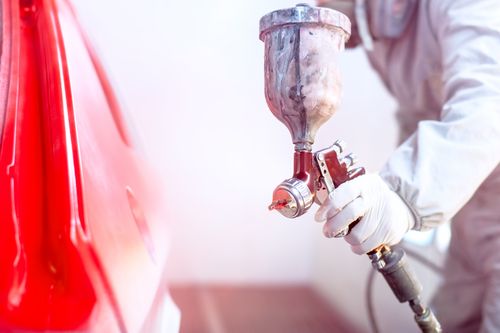When it comes to protecting your vehicle from the harsh elements of the cold seasons, the importance of quality auto body paint work cannot be overstated. The paint on your vehicle serves not only an aesthetic purpose but also plays a crucial role in safeguarding the metal beneath it. To ensure your vehicle's paint can endure the cold seasons, it's essential to understand the different types of paints used in auto body paint shops and the distinctions between a quality paint repair and a subpar one.
Types of Paint Used in Auto Body Paint Shops
Auto body paint shops use various types of automotive paints, each with its own characteristics and properties. The primary types of automotive paints include:
- Acrylic Paint: Acrylic paint is a water-based paint that was once commonly used but has largely been replaced by more advanced paint types. It is known for its ease of application and affordable price but tends to lack the durability required to withstand cold weather and other environmental factors.
- Enamel Paint: Enamel paints are oil-based and offer better durability and a glossy finish. While they can endure harsher conditions compared to acrylic paints, they are still not the best choice for withstanding cold seasons.
- Urethane Paint: Urethane paints have become the industry standard for automotive applications due to their superior durability, color retention, and resistance to environmental factors. These paints are more likely to withstand the challenges posed by cold weather.
Quality Paint vs. No-Quality Paint Work
Quality paint work in an auto body repair shop can make a world of difference in how well your vehicle's paint endures the cold seasons. Here's a breakdown of what distinguishes quality paint work from subpar work:
- Surface Preparation:
- Quality Paint Work: A reputable auto body shop will meticulously prepare the vehicle's surface before applying paint. This involves thorough cleaning, sanding, and ensuring a smooth, even surface for the paint to adhere to.
- No-Quality Paint Work: A subpar paint performance may skip or rush through the surface preparation process, leading to poor adhesion and a lower-quality finish.
- Paint Quality:
- Quality Paint Work: A quality paint performance will use high-quality automotive paints, typically urethane-based, known for their durability and resilience in challenging conditions.
- No-Quality Paint Repair: Some subpar paint repir shops may cut corners by using cheaper and lower-quality paints, which are more prone to fading, chipping, and peeling in cold weather.
- Layering and Clear Coat:
- Quality Paint Repair: A professional auto body paint shop will apply multiple layers of paint, including a clear coat for added protection. The clear coat enhances the paint's resistance to UV rays and environmental damage.
- No-Quality Paint Work: A subpar paint repair shop may skip or inadequately apply clear coat layers, leaving the underlying paint vulnerable to the elements.
- Drying and Curing:
- Quality Paint Work: A reputable shop will ensure proper drying and curing of the paint, often using controlled environments and curing ovens to optimize paint adhesion and longevity.
- No-Quality Paint Work: Inadequate drying and curing processes can result in paint that remains soft, leading to easy damage in cold weather.
- Quality Control and Experience:
- Quality Paint Work: An experienced auto body repair shop will have quality control measures in place to ensure that the paint repair meets high standards.
- No-Quality Paint Performance: A subpar shop may lack the necessary experience, leading to errors and inconsistencies in the vehicle's paint.
Conclusion
The importance of a quality paint performance on your vehicle cannot be underestimated, especially when it comes to enduring the challenges posed by cold seasons. High-quality paints, proper surface preparation, layering, clear coating, and professional expertise all contribute to durable and resilient paint work that can withstand the harsh conditions of winter.
When selecting an auto body repair shop for your vehicle's paint, ensure they use top-tier automotive paints, follow meticulous surface preparation steps, and have experienced professionals who pay attention to every detail. By investing in a quality paint repair shop, you not only enhance the aesthetic appeal of your vehicle but also provide it with the protection it needs to endure the cold seasons and maintain its value for years to come. So, whether you're driving through snowy landscapes or facing frosty mornings, your vehicle's paint will remain in pristine condition, ready to tackle whatever the cold seasons throw at it.

